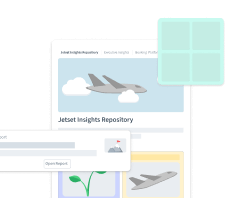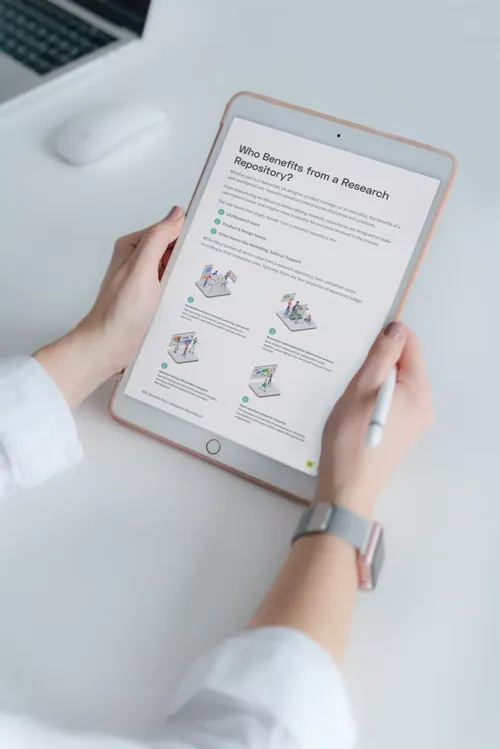
What a UX Research Repository Can Do for You
From our conversations with hundreds of researchers, we noticed many different definitions and expectations associated with the term ‘User Research Repository’ or ‘UX Research Repository.’ And while people agree that a repository has to do with storing research data and findings, the details often remain unclear, and people using the term often mean different things. It seems that UX Research Repository is another example of a phenomenon that Martin Fowler called semantic diffusion: a term loses its meaning as it spreads in the wider community and people understand different things by it.
But even if the term is a bit diffuse, it doesn't diminish the fact that UX research repositories are precious for most companies. So to provide you with a solid foundation to decide how a repository can support you best, we summarized the most prominent expectations we heard into 6 functions a repository can have.
To be clear: A repository can fulfill different combinations of the mentioned functions, and it’s essential to define which ones you need to focus on for your organization. It’s always possible to start with 1-2 functions and then gradually extend what your repository can do for you, your research team, or even your whole organization.
Let’s go:
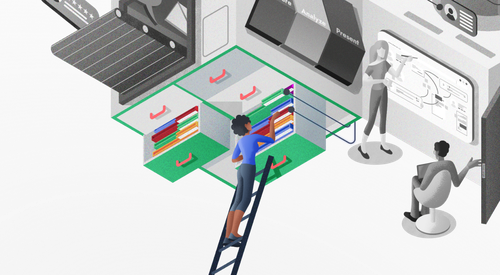
Centralize existing research data
When talking about research repositories, many times, it’s about having a centralized place to ‘store’ research data and organize it so you can find information quickly. This central place can be your starting point whenever questions such as ‘what do we already know about a specific research interest?’ pop up and will enable you to discover insights beyond single research studies. With a research repository, you can keep research data for later, so to say. Thereby it’s crucial to focus on making information discoverable, e.g., via overarching tags or relevant meta-information. In addition, this will allow you to explore how your coworkers conduct research and learn from each other.
Another aspect related to centralization is the desire for consistency of research, especially when conducting a lot of research in a bigger organization. When more people do research, very different approaches and ways of conducting and documenting research tend to be used. A research repository can support you in building a standardized or simply more consistent way to conduct and, more importantly, document research. This will help make information discoverable, the goal we mentioned earlier, and facilitate cross-referencing for meta-studies.
Associated impact
Facilitate search and discoverability of research data
Allow cross-referencing & meta-studies
Find answers to research questions quickly & precisely with existing data
Learn and grow by seeing how colleagues do it
Make research a company asset (and less tied to a single person)

Gather all feedback in one place
Besides proactive research studies as the source for insights, incoming feedback that reaches an organization can hold great value. That’s why researchers often want to incorporate multiple feedback sources in a research repository. Such feedback can come from various channels such as public reviews, support tickets, or sales conversations. Integrating this data creates a much broader feedback pool as more perspectives can flow into research. This becomes more relevant when multiple people gather feedback or talk to end customers. In addition, using all the existing data will lead to better research quality and potentially reduce the need for or scope of new primary studies.
Associated impact
Facilitate search and discoverability
Make existing information accessible for research
Improve research quality due to more included perspectives

Streamline the research process
A research repository can be tremendously helpful to optimize your research process when conducting a study. Planning upcoming research, taking notes during user research, transcribing interviews, analyzing gathered information, collecting highlights, clustering information, translating everything to insights, and preparing engaging and rich presentations or reports, can involve a ton of different tools (digital and analog) and, therefore, many context switches.
A research repository focused on streamlining your research process can minimize these tool switches, saving time for the researcher and improving the quality of results. In addition, findings stay connected to the raw data they are based on, making it easy to trace an insight back to its source. A streamlined process will ease the work of all researchers, and we believe it makes the whole process much more enjoyable. Yay!
Beyond that, we think that combining analysis and repository in one tool (read more here) is the key to a successful repository: It will reduce your effort to document and archive research information as an extra step. In short: the analysis can become a cataloging activity that lets you search data on a granular level, thereby making the repository even more helpful.
Associated impact
Save time with less tool and context switching
Improve the quality of research outcomes as data stays connected
Reduce the effort to document & archive research data
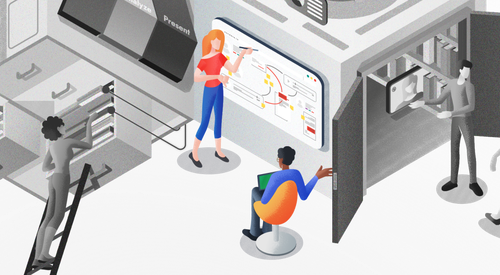
Analyze collaboratively
One reason why people use a research repository is the idea of democratization of research analysis. A repository can enable you to involve other researchers or stakeholders in the research process. A good repository can allow you to analyze research data collaboratively - both in-person and remotely. This is great because involving multiple people, especially non-researchers, has many advantages: it leads to better results through more diverse views and increases the awareness for user research and the resulting insights throughout the company.
In addition, a repository can empower non-research colleagues (like product managers) to conduct user research independently. Traditionally, researchers were the bottleneck when new research was required. A repository can change that: it allows existing researchers to set up a framework that enables non-researchers to conduct research independently and allows them to provide selective support, all while ensuring a high quality of research.
Associated impact
Increase trust in research through participation
Improve research results through diverse views
Grow UX research awareness
Let non-research colleagues research in a controlled environment
Expand analysis options without researchers as the bottleneck
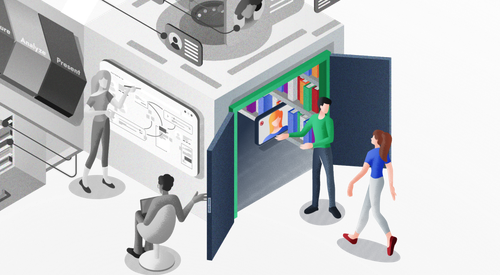
Democratize research access
A research repository can enable specific stakeholders, teams, or even a whole organization to access research anytime without the assistance of a researcher and, therefore, better use insights for their daily work. You need to figure out if self-serve access would include all research data or a condensed version focused on highlights and prepared results (read more about our considerations around access to all data vs. curated data). When aiming for self-serve access for your colleagues and stakeholders, make sure that your repository is searchable and, therefore, people can find the relevant insights.
„Anyone in the company should be able to come in and learn what they need to know. It shouldn’t be random stuff but rather ‘here are the top 5 stories anyone at the company should read’ and ‘top findings for your product area’ because there are multiple products and multiple features.“
We think this is an excellent way to bring user insights into all departments and further drive the user-centricity of an organization. In addition to that, an open research repository can be handy to onboard new colleagues.
Associated impact
Increase incorporation of research findings into decision-making
Increase UX research awareness
Foster user-centricity
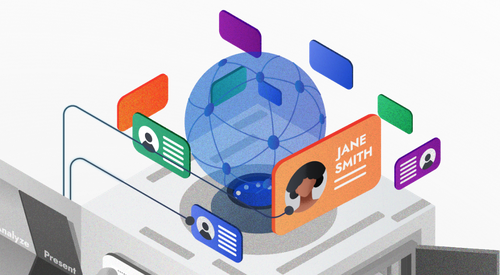
Build & maintain a participant database
A participant database may not be the first thing that comes to mind when thinking about the term research repository. A participant database helps to keep track of participant information, showing who you talked to when and thereby helping to recruit participants for future studies. The benefit of maintaining this database inside the repository is the link between participant data and research data. For example, you can find people based on what they said in previous studies or easily delete all data related to them if requested.
Associated impact
Facilitate recruiting
Connect research and participant data
Store research data privacy compliant
Okay, so a (good) research repository can help you to:
Centralize existing research data
Gather all feedback in one place
Streamline the research process
Analyze collaboratively
Democratize research access
Build & maintain a participant database
If one (or more) of these functionalities is what you’re looking for, investing in a repository could be the reasonable next step. We are convinced that a research repository can serve any research setting - sometimes, it may just be a matter of time to start using or building one. As this step may seem daunting at first, we want to encourage you to start thinking about how a repository can serve you best at the moment and how you can build it while conducting research step by step.
When working in a team or organization, we highly recommend involving others: Discuss how information is gathered currently, how you could find a common way to share research (findings) and how user research can better flow into decision-making. Having those conversations will support you to get clarity on at least these essential design decisions for a research repository: 1) who will use it (from contributors to consumers), 2) who will maintain it, and 3) which functions it should fulfill.
Want to read more? Check out our articles about creating an engaging user research presentation and making UX research accessible.



